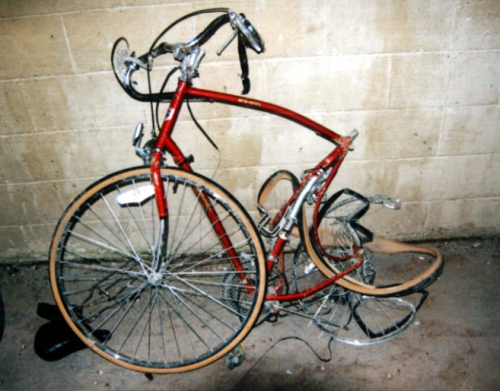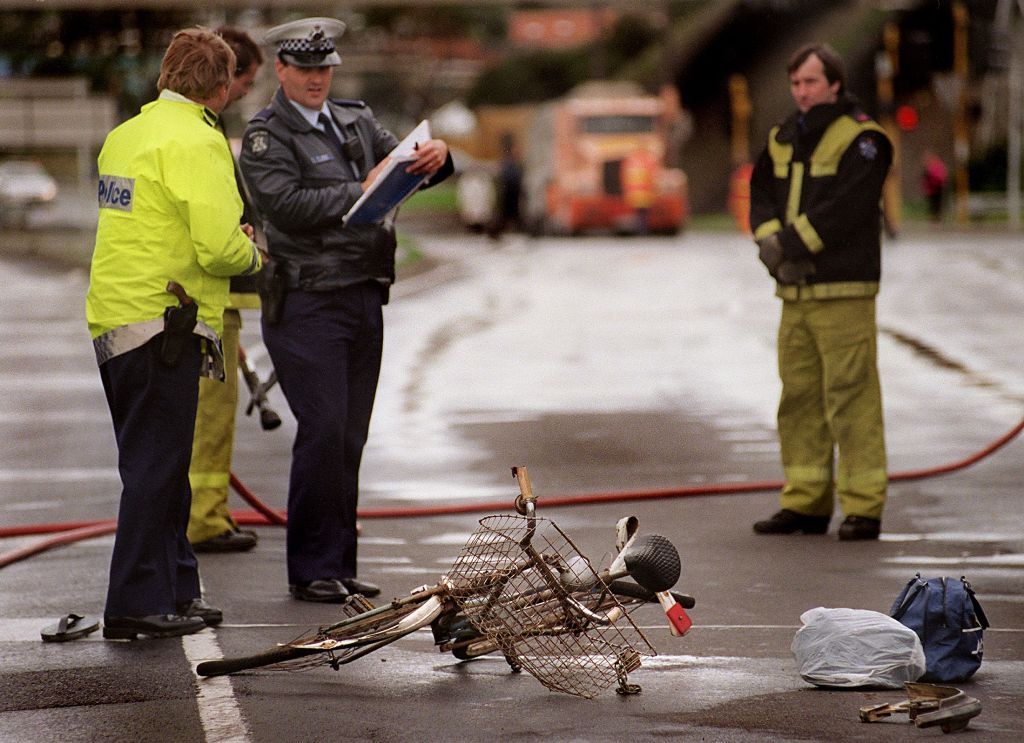It seems that lightning does strike twice sometimes. In just over three days, we have had two cycling fatalities in east Christchurch, first on Sunday and then today, Wednesday morning. Our deepest sympathies to the families and friends of the two deceased.

When events like this show up in the news, it is easy to get very worried about our own mortality when out on our bikes. The way that the media often goes overboard in its coverage of these events (just wait to see The Press tomorrow, I’m guessing…) also serves to give the impression that every ride out there is a deathwish. And so perhaps it’s no wonder that currently many people choose not to cycle because of perceived concerns about safety, particularly regarding traffic
However it is important to remember that the very reason these things often show up prominently in the media is because they are relatively rare and hence newsworthy. On average, only ~10 people die each year in motor vehicle crashes in NZ while out cycling; less than one a month. Meanwhile, typically about one person a day dies on our roads by other means (motor vehicles, pedestrians, etc) and it often barely make column filler in the paper.
The ongoing national Household Travel Survey tells us that we collectively cycle more than 25 million hours each year in NZ. This means that, on average, we have one fatal crash for every 2.5 million hours of riding or more. I can’t even comprehend what two million hours of riding is; someone who has lived on this planet for 80 years has only breathed for 700,000 hours…
If we want to consider all injury crashes with motor vehicles, typically there are about 800-900 Police-reported crashes every year in NZ. OK, sure there is a fair bit of under-reporting, but that’s largely at the minor injury end – hospital records also note that only about 300 people are hospitalised every year for cycle crashes with traffic. So, even if we assumed that the most serious cycle crashes (hospitalisation, outpatient treatment) numbered, say, 1000 per year we are talking about one serious crash for every 25,000 hours of riding. Again, do the math: if you cycled one hour a day every day for 70 years you’d be getting close to the average number of hours expected.
For those of us here in Christchurch, the news gets even better, thanks to the provision for cycling that has already been made over the years. 1/5th of all cycling in NZ occurs here in Christchurch. However, looking at the crash data from the past few years, only 1/6th of the injury crashes and 1/7th of the fatal crashes have occurred here. So your risk profile just improved over the national average. Just imagine how much better again that would be if we get our proposed high-quality cycling routes…
All this is not to belittle the more minor scrapes and near-misses we have too; everyone has their “war stories” of incidents that gave them a bit of a shake-up. Particularly if you’re just starting out riding, it’s not a great way to get enthused about cycling. But we have to be careful not to imagine that each of these incidents is but a smidgeon away from being a fatal or serious injury – as the stats show, it’s very likely not to be the case.
In 25 years of cycling I’ve had one dinged pedal and a couple of scraped limbs – in 25 years of cricket I’ve had a broken finger, ruptured achilles tendon, dislocated finger, detached retina, concussion, and countless bruises. Funnily enough, no-one has told me that cricket is too dangerous, and I suspect that the physical activity has brought me far greater gains. Similarly, the relatively small risks of death and injury when cycling are also swamped by the typical life-years gained by people who take up regular cycling as part of their health and well-being (remember, over 2500 people die year in NZ from cardio-vascular and obesity-related diseases). When that is taken into account it is probably more dangerous not to be cycling…


Of course it’s tragic, and to the family of these victims, no amount of logic and stats will make it feel any better. But definitely for the rest of us, it should.
The same thing happens in Australia each year with shark attacks. Perhaps one, maybe two a year fatal, yet the media goes all Jaws-sy each time. I guess we should be lucky there is no cycling equivalent film to Jaws (yet) – maybe in the vain of Spielberg’s ‘Duel’…. but with car and bike instead of truck and car! 🙂
I’ve just arrived in Christchurch, and getting into cycle commuting (I’m no road racer!) is one of the things I’m really looking forward to. I’d love to hook up with some experienced and objective riders to talk about accepted practise here. I mean pavements? Doesn’t your mum let you ride on the road? 🙂 (I can see why they are popular here, but what are the unwritten rules?)
Is there a group or a service that can help me improve my riding in person?
Welcome to Chch, Anton! I’d hope that this website can be a useful start for finding out about cycling around town (e.g. you might want to have a look at the “Links” page and “cycle skills” on the Site Map); we’re slowly building up useful guidance on how to get around town and welcome feedback on what else to blog about.
Groups like Frocks on Bikes and Spokes Canterbury can help provide some advice on riding issues around town, and CycleSafe teaches a lot of kids how to ride at schools, but there probably is a bit of a gap for good advice to adult riders. Hmm, something to think about…
Thanks Glen , as one of the 300 injured sufficiently for a hospital visit ( and still feeling the effects ) this information comes as affirming . But these latest incidents still raise the fear factor levels none-the-less and I am sure do so for many people. I rode down Avondale Road recently which is very near to this latest accident . It is at present closed for a complete repair job whilst the bridge is also closed . How disappointing to see the kerbing and channeling being rebuilt exactly as it was before . For such a wide space it would have been simple to reconfigure for a separated cycle-way . Why can’t simple logic come into the play here.? Just as EQC has done a u-turn and decreed that insulation can now be installed into the walls of repaired homes at the time of repair how difficult would it be for the CCC to identify a few roads that could easily be modified to allow for safer cycling features as they are repaired . Perhaps even trial some of the many options available , and send the message to us calling for change that they are actually genuine about cycling for Christchurch.
I agree Robert. SCIRT rules state something called betterment. If installing cycle facilities isn’t betterment I don’t know what is. I cycle through the Wainoni/Breezes intersection every day, and WOULD have declared it one of the better intersections in the city.
Betterment is the problem. Insurance will pay for replacement of like for like; anything that’s an improvement on this will cost the Council. Sure, it will cost them less to do it while the road is being repaired anyway, but they still have to find the money. Mind you in some cases, if they design things right it shouldn’t cost them more money, it will just be a rearrangement of what would have gone back in on the ground.